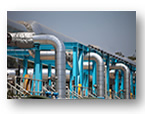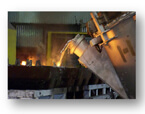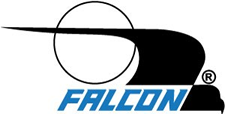Florida City Water Dept.


Alcoa
“The speed of delivery and customer service from Falcon has been excellent and build quality of the FN Series units are top notch.”
Electrical Engineer
Call Now: 1-800-842-6940

Industrial Applications Have Specific UPS Power Protection Requirements
There are few applications as demanding as industrial, including process control. Precision, repeatability, safety, and uptime are all paramount. Computerized equipment, SCADA systems, PLCs, microprocessors, and software require clean, consistent electrical power for reliable operation. For this reason, reliable, high-quality power protection, is crucial.
Why do Industrial Applications Demand Clean Power?
The technology that makes these systems so powerful is often sensitive to power-related problems, resulting in costly and unreliable operation. The magnitude of these problems is multiplied due to nearby production equipment such as motors and electrical devices “polluting” the facility’s electrical power. Common mode noise and ground loops between equipment or sensors can cause inaccurate readings. All of these problems can result in equipment damage, line stoppages, safety issues or the premature termination of critical processes. The resulting costs can be substantial.
To the uninitiated, the cause of these problems may not be readily apparent. Power problems affecting the equipment’s microprocessor controllers often result in controller “hangs” or sensor and encoder glitches with the associated loss of accuracy.
As an example, the Intelligent Traffic System (ITS) for the Verrazano-Narrows double-decker suspension bridge is made up of mission-critical electronic systems. These systems include computers, vehicle location sensors, toll equipment, cameras, monitoring, and control equipment operating 24×7 in often demanding environmental conditions. If any of these systems lose power, real-time traffic information can be compromised, leading to dangerous safety issues.
Falcon’s SSG Industrial UPSs were selected to protect the ITS due to being a wide-temperature online UPS that meets UL 508 standards, thereby assuring safety, code compliance and power protection inside industrial control panels. The SSG UPS units are designed to withstand temperatures that would destroy other UPS products. The SSG’s high-grade components and 10-year rated batteries deliver clean, continuous backup power to ITS equipment.
Why is an Online Industrial UPS the Best Solution?
Standby (offline) and line-interactive UPS products leave sensitive controllers and computers connected directly to the polluted utility power source 100% of the time when the utility power is present. The UPS inverter powers the equipment only when utility power is lost. These UPS designs provide just minimal voltage regulation and transient protection.
In contrast, a double-conversion online UPS continuously regenerates new, clean regulated, sinewave power to the connected equipment while operating from utility power or its internal batteries. This UPS acts as a firewall between questionable utility power and the power sensitive equipment
For more information on the differences of Standby, Line-Interactive and Online UPS systems, read the UPS Tutorial.
Industrial Applications are not in Temperature Controlled Environments
Most online UPS products are designed for installations in a protected setting, such as a computer room, with a controlled temperature range of 0⁰C to 40⁰C (32⁰F to 104⁰F). They are not designed to operate outside this temperature range for sustained time periods. Only online, industrial UPSs with a wide operational temperature range of at least -20°C to 55°C (-4°F to 131°F) are specifically manufactured for demanding locations. All plastics, batteries, and electronics are rated to operate in wide temperatures. Besides temperature, industrial environments can present other detrimental factors, such as localized power pollution generated from other equipment, airborne contaminants, and more.
Falcon’s SSG and SSG-RP industrial product families can provide a viable solution in meeting the demanding requirements of industrial applications. Falcon’s industrial wide-temperature UPS products are agency-certified (UL, cUL and CE) to operate from -20⁰C to 55⁰C (SSG) and -30⁰C to 65⁰C (SSG-RP).
For many applications, the UPS is located where heating and air conditioning are not available. The UPS must survive indoors or outdoors and in high and low temperatures for applications ranging from oil and gas pipelines to outdoor security systems. For these applications, Falcon’s ready-to-install outdoor UPS systems are the optimum solution as they are UL 1778, UL 508, cUL Listed and CE certified to operate from -20°C to 55°C (SSG) and -30°C to 65°C (SSG-RP).
UPS Batteries and Service Costs
It is also important to know that standard UPS products incorporate low-cost, 5-year rated valve regulated lead-acid (VRLA) batteries. The 5-year rating is predicated on the battery operating at an ambient temperature of 25°C (77°F). They are not designed for industrial environments. Users can face costly battery replacements every one to two years especially in industrial settings where cold and heat further reduce battery life.
Falcon has addressed this problem by using 10 to 12-year rated, wide-temperature batteries. These high-performance batteries have a superior 10 to 12-year service life in a 25°C environment. An online industrial UPS that incorporates these wide-temperature batteries can operate reliably and maintain a better service life in temperatures above 40°C and below 0°C. This wide operating temperature range eliminates costly and frequent battery replacement and significantly reduces maintenance.
Falcon Technical Support
Power problems in industrial locations can be complex and challenging to solve. Falcon’s technical team can assist you to determine the most effective solution – call: 800-842-6940, email: info@falconups.com or fill out our product request form
